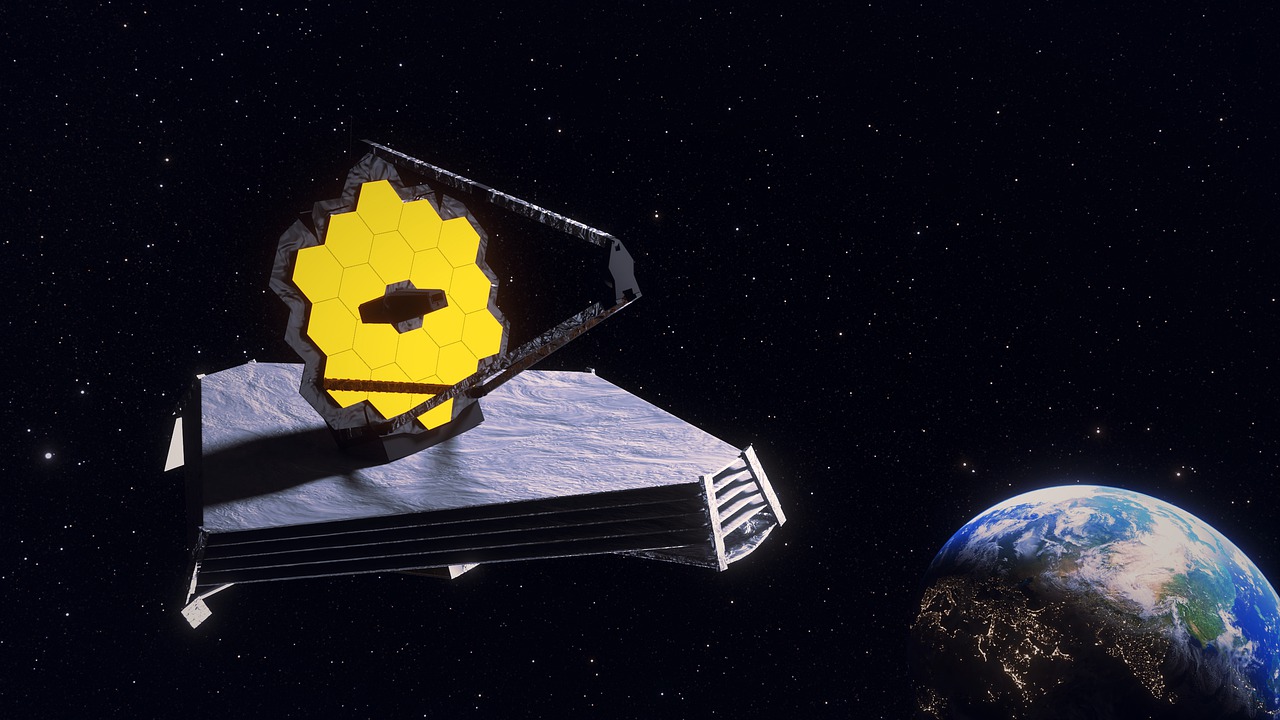The Webb Telescope is a space telescope that was built in the 1990s by the European Space Agency (ESA) and is used to study objects in space. It’s named after John Herschel, a British scientist who discovered several planets orbiting distant stars back in the 1800s. The telescope can be configured to study a specific area of interest from different perspectives at once. It also has an extremely large optical primary mirror (32 feet across) that focuses light into extremely sharp images that are much easier on our eyes than those obtained with smaller telescopes. It’s like having two telescopes in one! The telescope is made up of several components, including: 1.) The Primary Mirror – This enormous reflector is located at its North Pole and contains 32ft^3 of optical glass. The mirror is suspended from brackets attached to the septum (air cavity) inside the observatory. The result is like looking through a giant magnifying glass that produces an image of whatever object you point it at almost directly overhead. 2.) The Secondary Mirror – This smaller mirror sits above and behind the Primary Mirror, helping to correct for any spherical aberration introduced when light passes through the Primary Mirror. The size and shape of this secondary mirror are chosen such that it provides a safe path for material from both mirrors before it hits the primary mirror, greasing its tracks and reducing spherical aberration even more efficiently than can be achieved with other methods.
How to see the Webb Telescope in action!
The Webb Telescope is unique in being able to simultaneously observe a number of different wavelengths of light, or frequencies, with a single telescope. This incredible feat was achieved by carefully engineering a design that allows the primary mirror to be moved from one position to another with the minimum of disturbance to the telescope itself. This means that the telescope can observe different areas of the sky simultaneously, each from a different perspective. The telescopes optics are incorporated in the primary mirror, which is located at the north pole of the observatory and contains a field of view that is nearly twice as large as that of the Kepler Space telescope. The combination of the large field of view, the large primary mirror and the ability of the Webb to switch between multiple wavelengths of light provide astronomers with a broad range of scientific exploration.
How Big is the Webb Telescope?
The size of the primary mirror determines the optical aperture of the telescope. Aperture is the amount of space that is exposed to incoming light. A big enough primary mirror will allow the telescope to see far into the universe and allow astronomers to study objects that are too dim for visible light to reach. The big drawback of the big primary mirror is that it requires a big build to house it and the associated mechanical systems.
What it can measure and how
The size and composition of the primary mirror determine the optical power of the telescope. The optical power of the telescope is determined by the ratio of the area of the mirror to the area of the primary. This determines the resolution of the telescope and its ability to resolve faint objects such as the planets, stars and nebulae into smaller components. The optical power of the telescope is determined by the brightness of the object being observed, as well as the brightness of the light being reflected from the object to the telescope.
What it can’t measure
The Optical Telescope, as it is called, can’t tell us everything about an object. It’s primary purpose is to provide an image of the sky that is as sharp as possible without being affected by visual clutter, such as stars and other celestial objects that might appear in the image. The optical telescope sees light travelling in the same direction as the optical path of the primary mirror. By blocking out all but the dimmest light, the optical telescope is able to see further into the galaxy and see less-elevated stars. The optical telescope is not equipped to see into the ionosphere and tell us what objects are within it.
How to use the Webb Telescope
The Optical Telescope works by shining a light beam from a powerful telescope (typically a ground-based or space-based telescope) into a vacuum chamber at the base of the telescope. A light cluster is formed in the chamber, which is filled with a gas that is transparent to the light beam. A light pipe then leads from the chamber to a camera that records the images. The light that passes through the optical telescope is unfocused, i.e. it isn’t properly coated with dirt or scour to prevent it from reaching the camera. The light focuses as it passes through the large primary mirror, which is located at the top of the telescope. The image that the camera produces is then sent to a computer monitor where it can be viewed on a screen or printed out and kept as a spare.
A few words about data
All that great optical power comes at a price, however. The more powerful the telescope, the more light pollution it generates and the more chemicals are released into the air from the electronics in the computer boxes and the like that hold the light from the telescope. This means that if you want to see the stars with the naked eye, you’ll need to keep the lights low.
The future of the Webb Telescope
The Optical Telescope was designed to be disposable. It is made of plastic, and its joints are easily breakable. After about two years, it can be replaced by simply lifting it off the ground and dropping it in the ocean. The most recent version of the Optical Telescope was delivered in May 2014 and cost about $800,000. The telescope is expected to last for 10 to 15 years and, once it is no longer needed, can be discarded and the materials used to make it can be reused.
Key Takeaway
The Webb Telescope is an extremely powerful optical telescope that provides astronomers with a unique view of the universe. It’s primary purpose is to study the sky in ultraviolet and visible light wavelengths, but it can also be used to observe in the infrared. It’s been used to observe asteroids and planets in our solar system as well as galaxies and nebulae in constellations far from our own.




